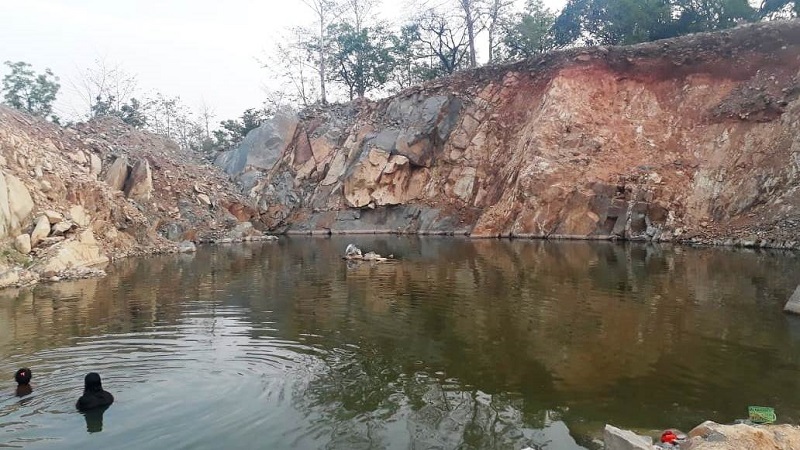 Photo by Deepanwita Gita Niyogi
Photo by Deepanwita Gita Niyogi
Sacred groves, also called sarna or jaherathan, are patches of forests containing important tree species. These are places of tribal worship. The Sal tree is considered sacred in these groves even though there are many sarnas where other tree species are also found. In many places, entire village forests and hills are also considered sacred by tribal communities. But now they are under threat.
 Photo by Deepanwita Gita Niyogi
Photo by Deepanwita Gita Niyogi
Two water tanks were constructed on this site in Latma, Ranchi in 1962. Earlier, there used to be a sacred grove or sarna here where tribal communities offered prayers, said Ranchi resident Mangtu Oraon (right). Oraon’s friend Budhwa Munda informed that these two tanks supply 8.50 lakh gallons of water each till Harmu, a well-known residential area in Ranchi, Jharkhand’s capital. Water comes from the Dhurwa dam, about 12 km away. “This place is part of Latma hill. Community members had protested at that time, but it was of no avail,” says Oraon.
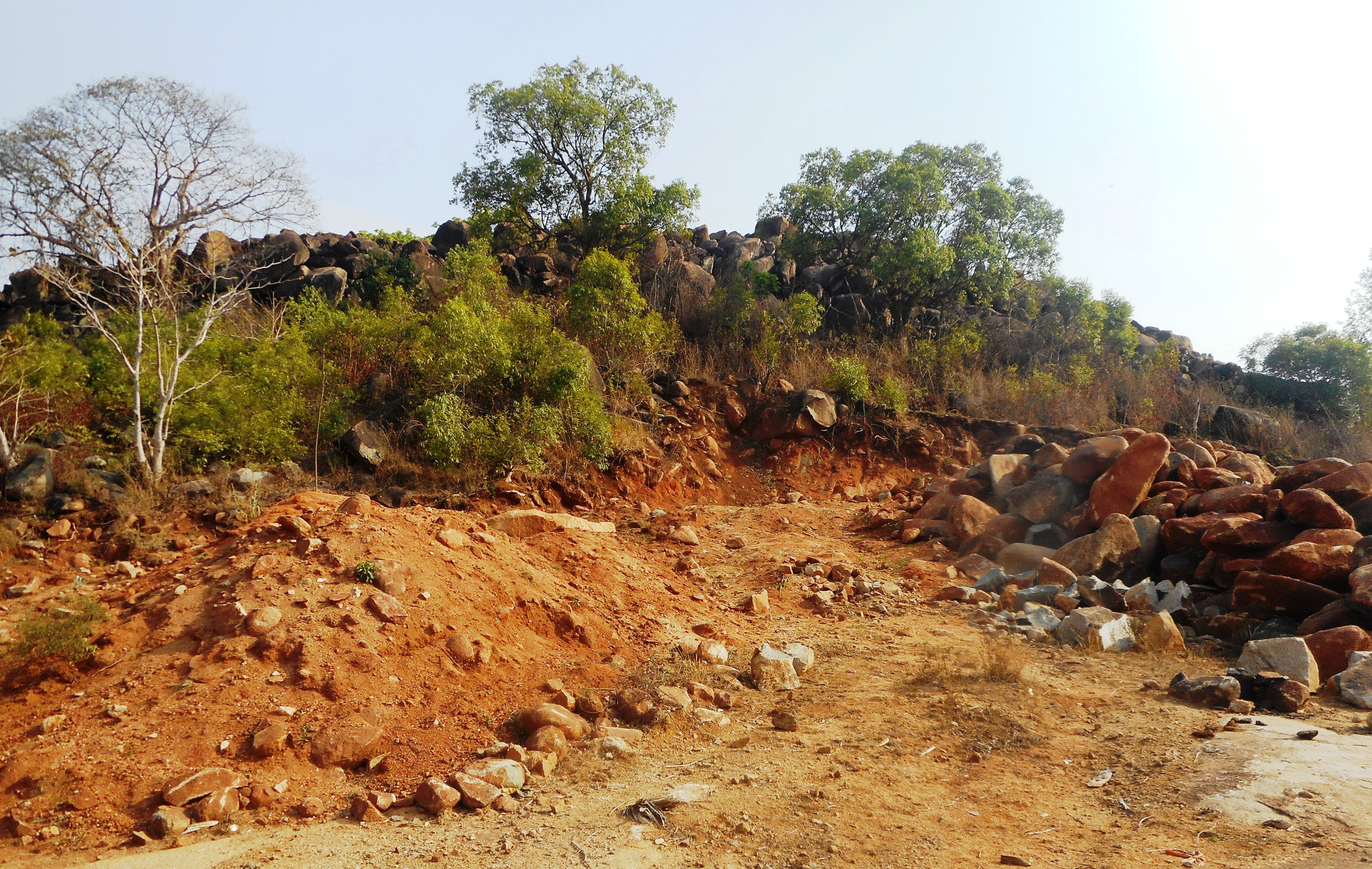 Photo by Deepanwita Gita Niyogi
Photo by Deepanwita Gita Niyogi
Pauru village in Potka block of East Singhbhum district in Jharkhand has a sacred grove or jaherathan which is under threat due to stone mining. “Many of our groves are being encroached upon under the guise of various government schemes,” says resident Ananda Pal. Near the grove site, is parked a JCB machine. The grove situated on a forested hill is a natural jaherathan as is known in the local language. “Stones have been cut here, but we consider the entire hill as sacred. Forests store rainwater. The villagers here cultivate paddy. Still, Maa Tara Construction and Equipment Company wanted to blast and drill at the site,” alleges resident Manik Sardar. “Protests took place till 2016-17,” said Laxmikant Bhumij. “As a result of protest, work ceased and the matter is now sub-judice. Work has been stalled since seven to eight months. The gram pradhan or the village head was not informed and neither was people’s consent taken. The company also lodged false cases against many of us,” Bhumij adds.
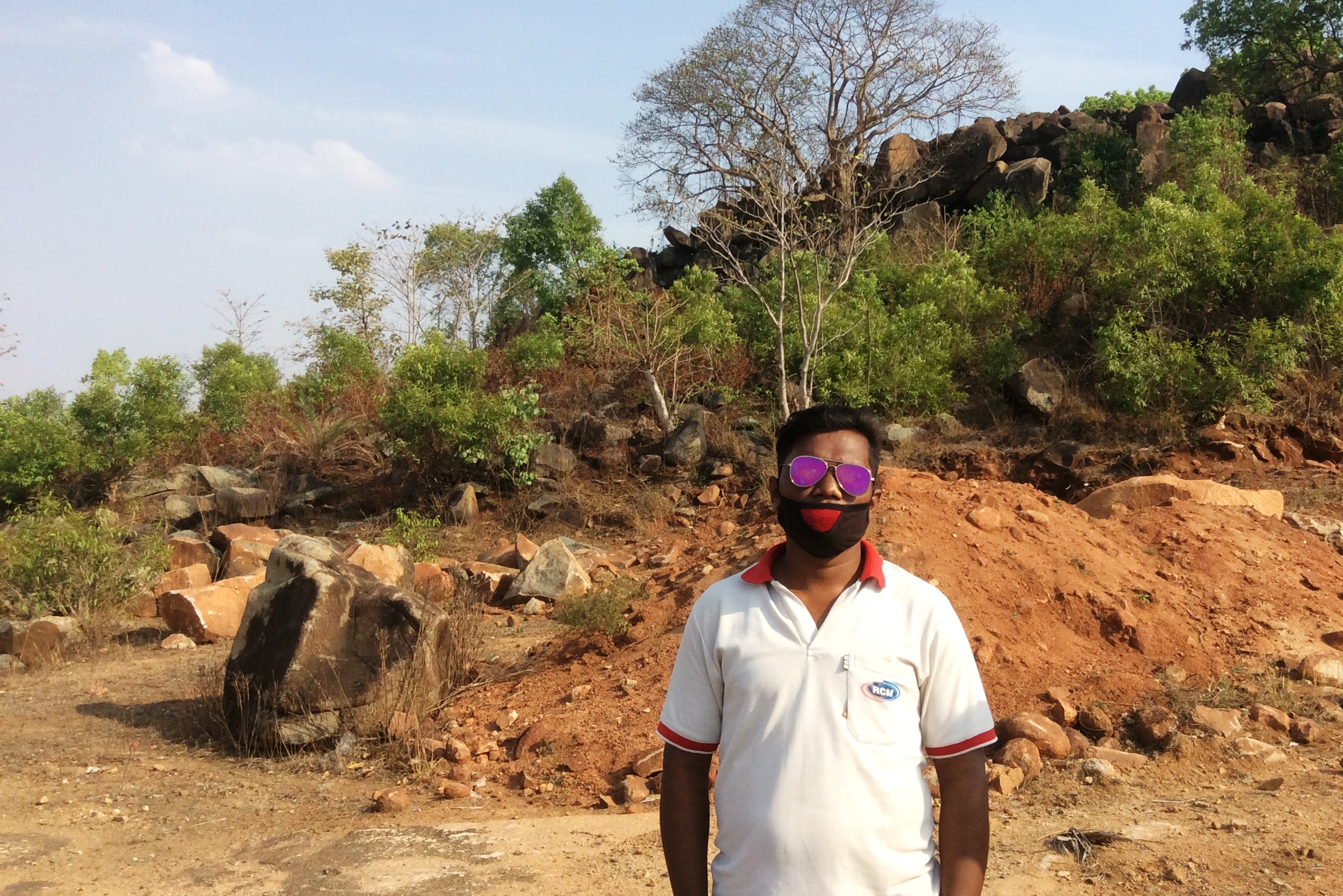 Photo by Deepanwita Gita Niyogi
Photo by Deepanwita Gita Niyogi
At the sacred grove in Pauru village, prayers are offered during the tribal festival of Sarhul held in April. Apart from that, five to six times prayers are offered here by the community. It is a historical place too. “Once upon a time, the Dalbhum kings used to visit here,” informs Manik Sardar (in photo). The grove has animals like rabbits, Sal trees and precious herbs. “We sometimes climb up. If this vanishes, what will we do? Women played a vital role in opposing the company. Loot of natural resources is going on unabated,” adds Sardar.
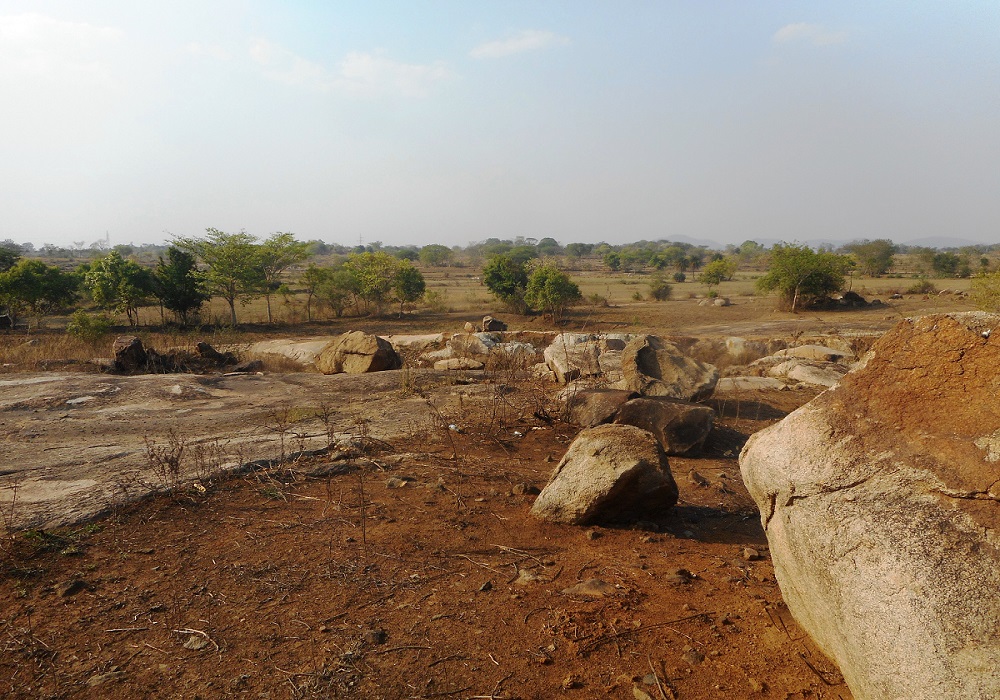 Photo by Deepanwita Gita Niyogi
Photo by Deepanwita Gita Niyogi
The view around the grove in Pauru is scenic. It is called Raja Chatani. This is also the place where villagers beat or thresh paddy on the hard surface after harvest. There are agricultural fields too nearby. “But the company has drilled holes here to break the stone. It is a cultural place for all of us,” informs Pal. The hill where the jaherathan is situated is called Titiling hill. “Mining here will also cause a lot of pollution. The company had started work, but stopped after we protested,” says Manik Sardar.
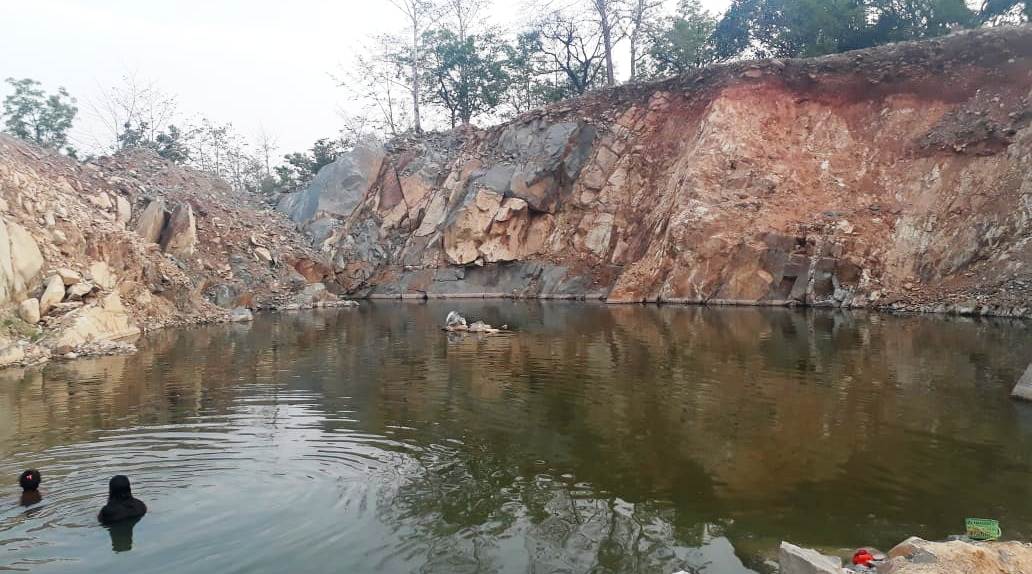 Photo by Deepanwita Gita Niyogi
Photo by Deepanwita Gita Niyogi
The place is called the Susun Akhara of Nachosai village in East Singhbhum. “Here, the Bhumij community offers prayers to the Shakti devi,” says guide Jaypal Singh. It has been dug up for stone mining and now water has filled up at the sunken site. It was once a hilly place.
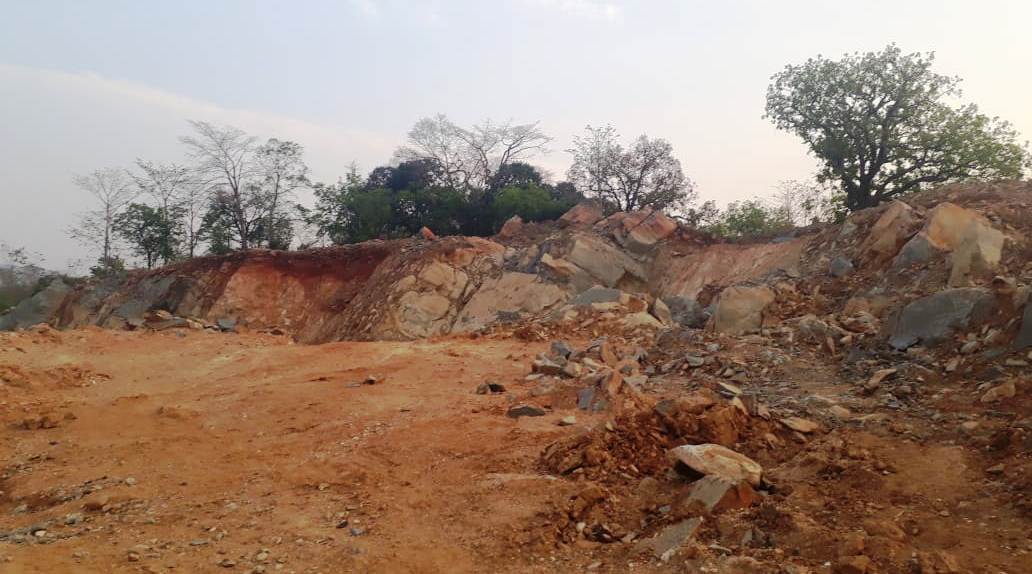 Photo by Deepanwita Gita Niyogi
Photo by Deepanwita Gita Niyogi
“The sacred grove or jaherathan on hillock Sadan Gutu in Nachosai village in East Singhbhum is under threat due to stone mining,” says resident Prastam Sardar. Apart from worshipping at the grove, locals also perform another kind of worship known as bujni bonga nearby, when people assemble and partake of offerings once a year in January-February. “Only after that, the Bhumij community can start sowing paddy,” adds Sardar.
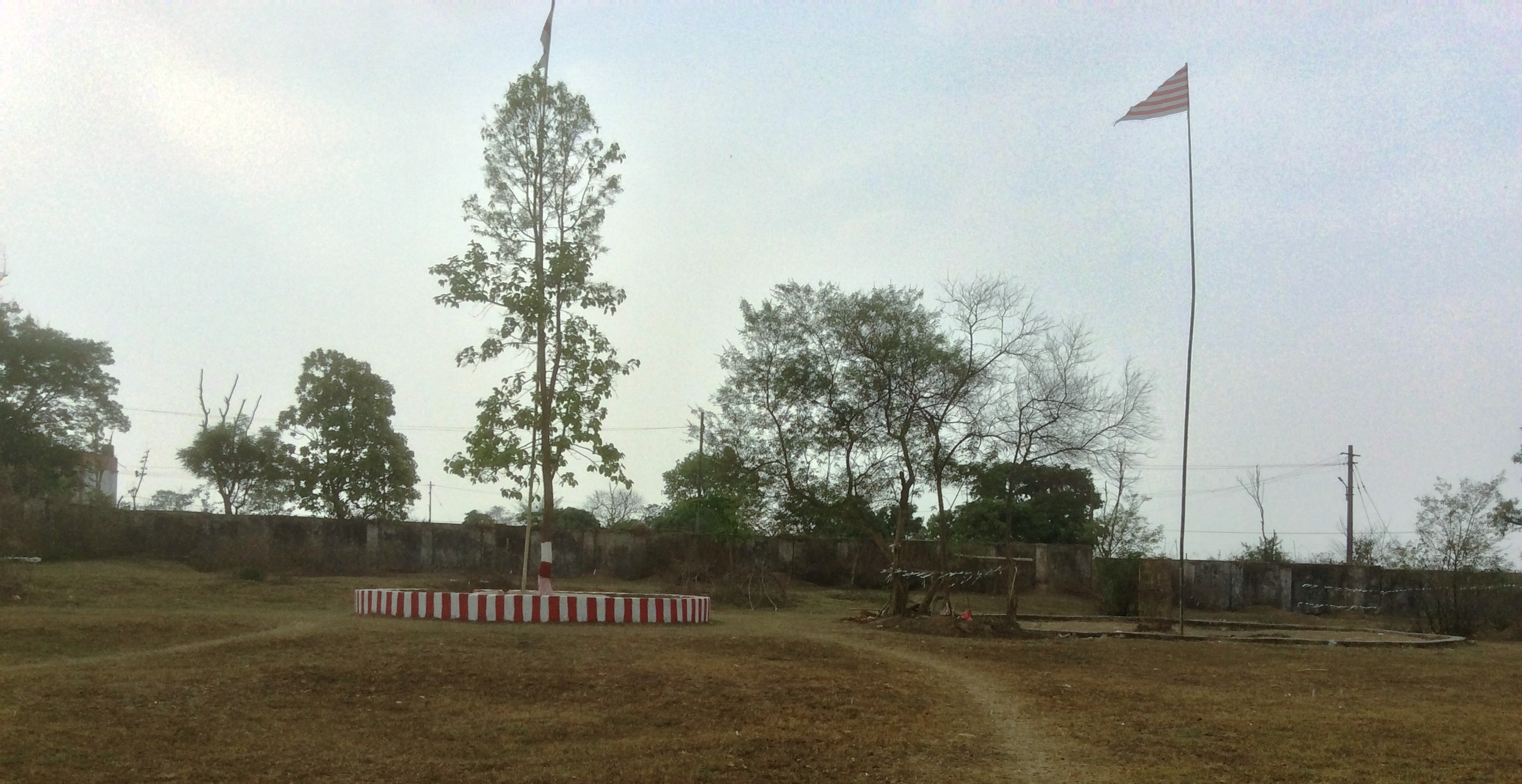 Photo by Deepanwita Gita Niyogi
Photo by Deepanwita Gita Niyogi
An Army camp at the Hundru sacred grove site or sarna sthal in Ranchi has become a virtual headache for the tribal community. “The situation is disturbing for us,” says Mangtu Oraon. The land belongs to Hundru, but the army has acquired it. Recently, The Telegraph reported that the Army has demolished the sacred grove site. “The Army claims that it is their land. It does not allow beautification at the site,” adds Oraon. Pushpa Tirkey, councillor of ward number 50, says, “Gherabandi or construction of a boundary wall is not allowed around the sacred grove or Sarna site.”
*This photo feature was produced in partnership with the Pulitzer Center
Related: